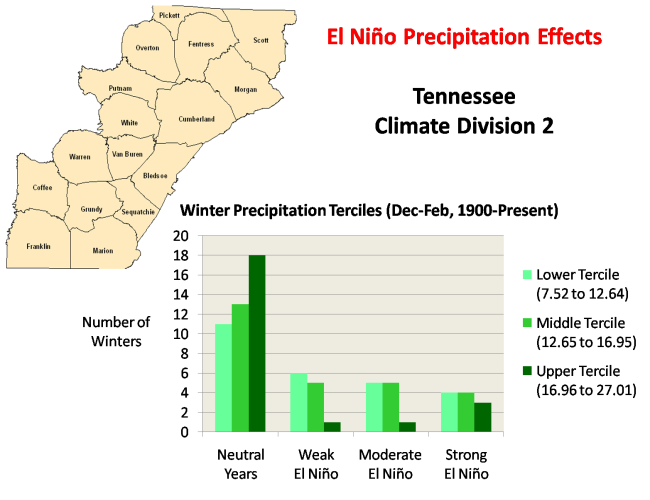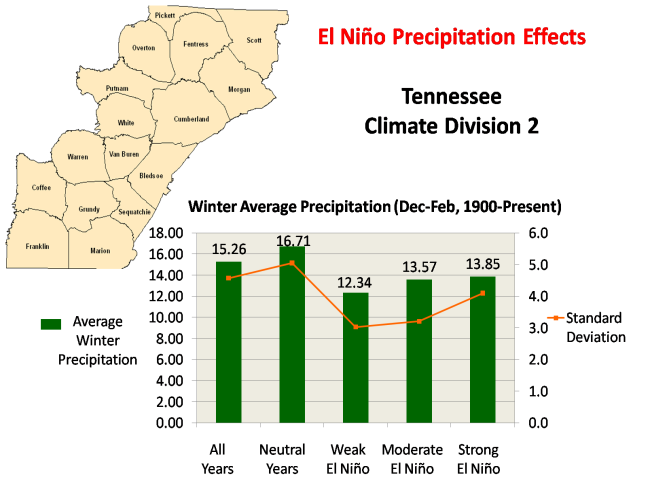
A storm over the southwest U.S. will shift east through Thursday while another Pacific storm pivots over the region Friday through the weekend. Widespread low elevation rain and high elevation snow showers are expected with each storm. Both storms will shift over the central U.S. with the first occurring tonight through Thursday and the second Saturday night into Monday. Flood Watches issued. Read More >
|
The graph below details impacts during the winter months (December through February) associated with El Niños of the indicated intensity in Tennessee climate division 2. Winter precipitation is divided into terciles, or the driest third, the middle third, and the wettest third of all winters between 1900 and 2007. The precipitation totals associated with these groups are indicated on the graph. For example, for all winters during this period for this climate division, the driest third had precipitation totals from 7.52 inches to 12.64 inches. Notice in the graph below that only one winter during all of the moderate El Niño events during this period was among the wettest third of all winters. The ten remaining winters of moderate El Niño strength were equally split between the driest third and middle third. Thus, the great majority of past winters during moderate events have been in the middle or driest third, and a trend towards normal to below normal precipitation is shown.
|
 |
|
The graph below shows El Niño's effect on average winter precipitation between 1900 and 2007. Notice that average precipitation decreases fairly markedly during weak El Niño events vs. neutral conditions, and that an upward trend in precipitation is observed as El Niño conditions strengthen. Still, average winter precipitation is slightly more than three inches lower for moderate El Niño events when compared to neutral years. Also, notice that the standard deviation, or variability, of winter precipitation is relatively low during weak and moderate El Niños. In fact, precipitation during neutral winters is more than one standard deviation above precipitation during weak and moderate El Niño winters.
|
 |